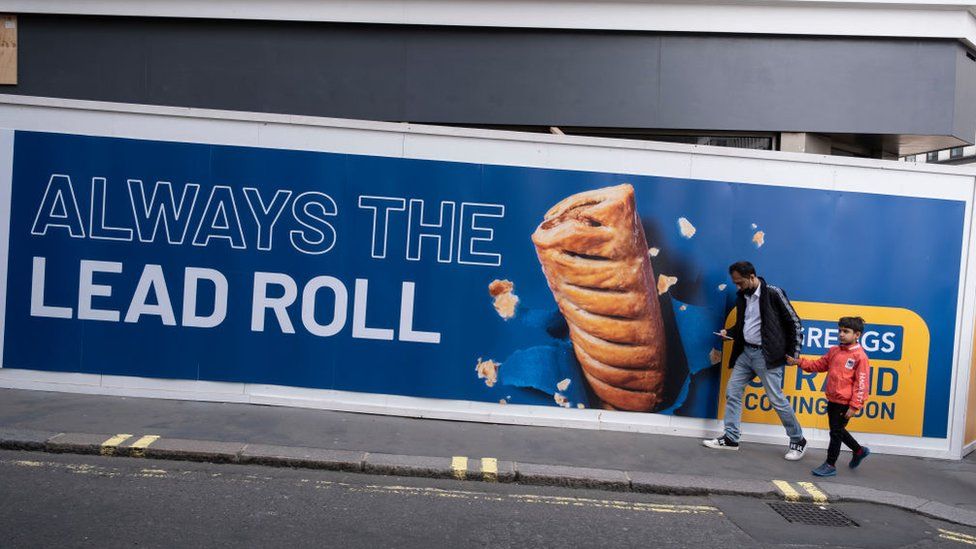Six Christmas retail winners and two losers revealed

As the UK headed into Christmas, there was speculation that it was going to be a very tough festive season. Not least for all the shops that rely on the period for a big chunk of their sales.
Soaring food prices and energy bills, pay not going up at the same rate, the outlook was – and still is – bleak.
But as the country’s biggest retailers have shown over the past week or so, there are surprisingly more Christmas winners than losers this time around.
So who has come out on top and how?
Winners

Tesco: The supermarket giant’s like-for-like sales rose by 5.3% for the 19 weeks to 7 January, which was a smidge below expectations but still strong.
There appeared to be a divergence in terms of how people shopped: either trading down from branded groceries to Tesco’s value range or splashing out on the company’s Finest fare. While Tesco’s sales figures were robust, the rise was because goods were more expensive – due to the pace of price rises or inflation – as opposed to people buying more items.
Tesco chief executive Ken Murphy admitted that the volume of goods sold was marginally lower than the comparable period. But he said the UK consumer “has proved quite resilient”.
Marks & Spencer: It has been a banner Christmas for the High Street stalwart. Like-for-like sales rose 7.2% across the business for the three months to 31 December.
In particular, demand for clothing and home goods was strong with increases in both volume and value. Unlike Christmas 2021, there were no Covid restrictions in place so people invested in formalwear or got gussied-up in sequins. M&S shifted 140,000 pieces of sequinned clothing in Christmas week alone. On the home side, shoppers indulged in light-up Christmas scented candles.
For food, like-for-like sales rose by 6.3%, which was primarily driven by higher inflation. But the cash registers, or self-service counters, were kept busy – on the Friday before the big day M&S generated its highest Christmas sales ever of £80m.

Sainsbury’s
The supermarket saw a marked shift in people shopping in-store this Christmas compared with the previous year when Omicron emerged and online sales boomed. Sainsbury’s, which also owns Argos, said same-store sales rose by 5.9% for the four months to 7 January 2023.
Sainsbury’s chief executive Simon Roberts said shoppers were “really careful” about where they spend “and they wanted to come in and see the deals and offers we had”.
Walk-in sales at Argos rose strongly in Christmas week. It wasn’t all about the festive season though. Retailers including Sainsbury’s received a boost from the England men’s football team’s (relatively) decent run to the quarter finals of the World Cup.
Next: A cold snap in December helped lift the retailer’s sales by 4.8% for the nine weeks to 30 December. Next also bumped up its full-year profit forecast by £20m to £860m.
But the ever-cautious company warned that higher energy bills and mortgage rates would dampen demand from shoppers in the coming year. And inflation means that people visiting Next’s stores will see price rises for both spring and summer as well as autumn and winter clothing.
B&M: The discounter said its like-for-like UK sales rose by 6.4% through what it referred to as its “golden quarter”, otherwise known as the three months to 24 December. Total revenue for the UK grew from £1.1bn to £1.3bn.

Greggs
The bakery chain saw same-store sales surge by 18.2% in the three months to 31 December. The bounce was helped by comparisons to the end of 2021 when Covid was still weighing on households and businesses. Greggs acknowledged that the year ahead will be “challenging” but said the food and drink it sells will appeal to people looking to manage their budgets.
Losers
Asos: The online fashion retailer said group sales dropped 3% in the four months to the end of December. It was more of a reflection of long-running issues at the company than Christmas trade, although it said the business was “affected by disruption in the delivery market” during December when Royal Mail staged a number of strikes. It said: “This resulted in earlier cut-off dates for Christmas and New Year deliveries.”
Halfords: The cycling and car parts retailer issued a profit warning citing weaker customer demand as prices soar. It now expects full-year profits before tax to hit between £50-60m, compared with a previous forecast of £65-75m. It also said it had struggled to recruit enough skilled technicians.
-
-
2 days ago
![Womn shopping]()
-


